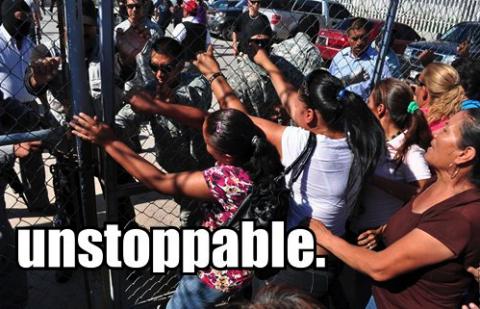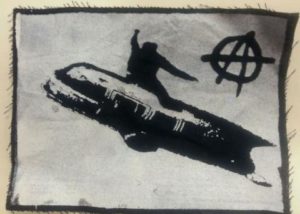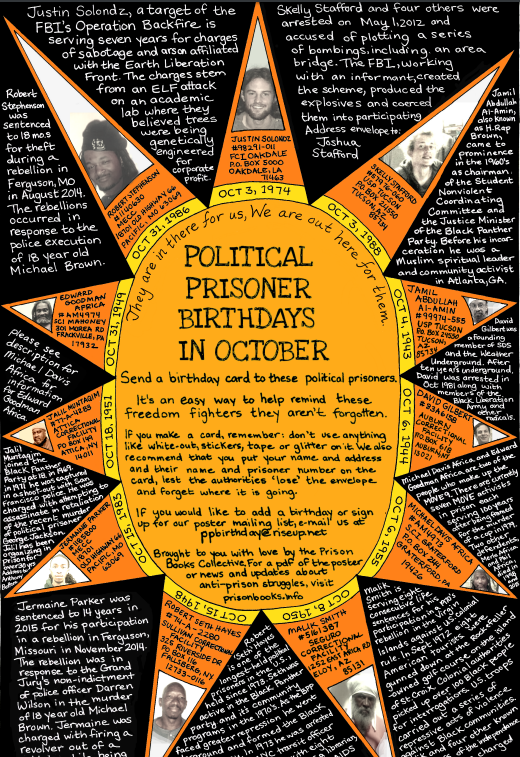Filed under: Bloc Party, Editorials, Incarceration, Interviews, Political Prisoners
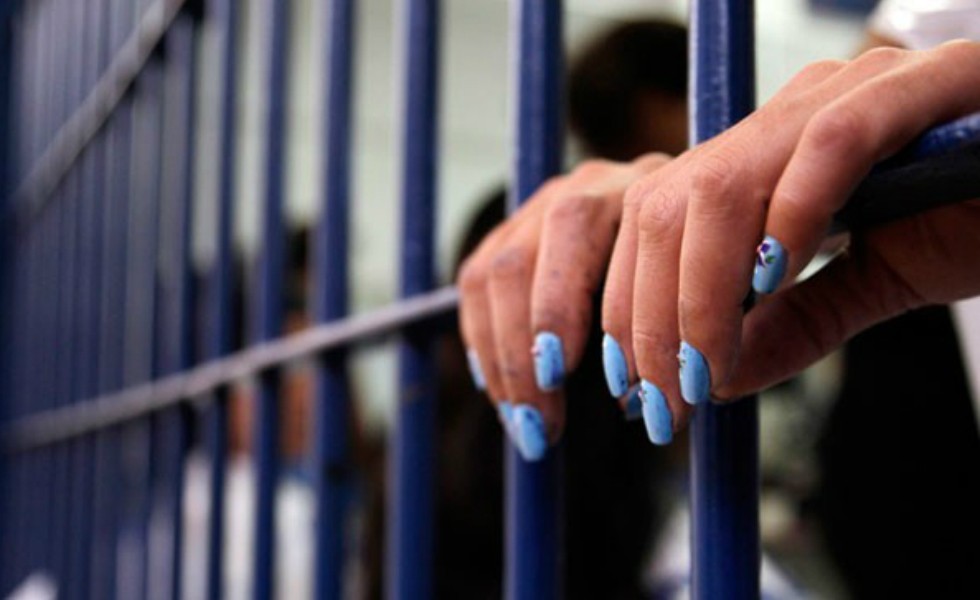
Originally posted to It’s Going Down
We’ve been busy, as it seems many of you have. At the end of the Summer we mentioned that we were working on new kinds of content for Bloc Party and we’re excited to roll out our first attempt at that. In the coming months we plan to feature guest columnists from both the inside and outside the prison walls, short audio pieces on the IGDCast, more interviews and more. As resistance is ever evolving, we hope to continue to evolve the ways in which we highlight the struggles that folks are engaged in. You can continue to find prison and prisoner support updates in our roundup as well.
This week we’re sharing a quick interview we did with the ever inspiring Firehawk of Unstoppable, a prisoner publication that focuses on women, trans and queer prisoners. We wanted to ask Firehawk about how women, transwomen and femmes are plugging into the current prison strike and rebellions happening this Fall.
Bloc Party: How does women’s/femme participation in the strike differ from men’s facilities? Are there differing challenges?
Firehawk: The women and transwomen we’ve spoken with have been excited by the rebellions and many have engaged in some way. Three women in Washington refused to work on September 9th and were promptly thrown in the hole. An entire unit in Colorado refused to go to the chow hall on September 9th at the same time that the prison shut down all work operations in anticipation of a strike. Women in a prison in California refused to go to work for a number of days. And two transwomen in Washington refused meals in protest for the transmisogynist harassment they’ve been receiving by guards and other prisoners. The largest difference we’ve noticed is that women/transwomen’s participation in the strike seems to be less sustained than some of the men’s facilities.
This is probably due to the challenges in sharing information with women/transwomen prisoners. Much of the outside support efforts and resources have been directed towards cis-men in men’s prisons, often because of preexisting relationships and contacts. But another large obstacle has been that mail-room staff at women’s prisons have particularly repressive and quick to ban materials, sometimes even the most vaguely political literature. So unfortunately the biggest challenge has been getting word about the strike in to women and transwomen.
Even for those women and transwomen who do know about the strike, there’s some uncertainty at how much support they’ll receive from outside supporters and among other prisoners. For some, there is some hesitancy in participating for fear that they will be the only one or that they will face serious reprisals.
BP: Are certain tactics more common amongst women/femme rebels?
FH: Generally, women/femme and men rebels share similar tactics. Although it often goes unnoticed, women prisoners have a history of taking over cellblocks like in the 1974 August Rebellion and 1975 riot at a North Carolina prison. Twenty-two women at an immigrant detention center in Berks County, PA have been on a sustained hunger strike since August of this year. We should not assume that women and transwomen are more passive. Other tactics include mutual aid and emotional support, particularly considering the psychological assaults women experience by guards and prison programming.
BP: Are there specific reasons women/femmes might not participate in the strike vs. cis-male prisoners?
FH: Some women/transwomen prisoners, although they agree with the strike, have pressing and urgent concerns that often take priority over engaging in a work stoppage. Transwomen, housed in men’s facilities, experience astonishingly high rates of sexual assault by other prisoners and guards. Many don’t have access to the hormones that they normally would take if they had full bodily autonomy. Women prisoners report having higher rates (than men prisoners or women in the general population) of neurodivergence and sexual and emotional trauma. “Mental health care” for women and transwomen in prison is virtually nonexistent. We’ve heard reports of a woman in a Colorado prison who, after years of repeatedly asking for more counseling and better psychological care, was met with silence. She then indicate to her friends she was suicidal, and dozens of minutes before she jumped from the third tier and committed suicide, prisoners were screaming for correctional staff to help. The guards sat at their stations and did nothing while she lay dying. These kinds of issues are life or death for women and transwomen.
A member of Unstoppable and a former prisoner wrote an article about the “mental health care” system, which basically consists of irrelevant group therapy classes run by correctional staff. These classes don’t offer care or support, but instead “further marginalize people who are already vulnerable by leading them to believe that they are pathologically deficient” for being in prison. This “therapy” vilifies women “for being forced into making compromised choices within a racist and economically exploitative system.”
BP: Does the role of family/friend support differ?
FH: Some women prisoners report that they are fearful to lose support from their family, children, or friends if they participate in the strike. Often this is their only “lifeline” to normalcy, and for women prisoners who are mothers, they already experience a lot of stigma for being “bad” mothers and so they do not want to jeopardize the connections they have with their children.
A friend of ours who is incarcerated at a women’s prison gave us this advice: Since these connections can be so strong and important, outside supporters should do everything within their power to develop relationships with women prisoners’ families. Then, when women prisoners decide to take an action, outside supporters could help frame the actions as political to their families. The more that the families understand these actions as vital and necessary, the more that they will support their incarcerated loved ones during and after the action and quite possibly raise a raucous on the outside as well.
BP: How can people support the work of Unstoppable?
FH: Folks can let women and transwomen prisoners on the inside know that this publication exists and can also help get the word out to people on the outside about the issues that Unstoppable tries to address. Also, folks can visit our website to access the latest edition and help to circulate it in prisons and beyond. We are also accepting donations to help with printing and mailing costs.
BP: Are there ways people could better highlight non cis-male rebels?
FH: Folks can start corresponding to non cis-male rebels. Black and Pink has a great database and pen-pal service for queer women and transwomen (and queer cis-men). They can also start a zines to prisoners project in their town or get more linked in to existing zines or books to prisoners projects. Folks can start researching and asking women/femme rebels what resistance looks like for them and writing news articles and circulating information about that. People can start their own publication for women and transwomen prisoners to again better highlight their resistance and also to help spread the word.
BP: Thank you so much, Firehawk, for all that you and your crew of folks at Unstoppable are doing!
Now for all that news from the Bloc…
Anarchist prisoner, Casey Brezik, has written a follow up letter continuing his thoughts on anarchists in space. There is something truly beautiful about the grandness of the limitless ideas that Casey has and while they might not reflect our ideas here at Bloc Party, we support his pursuits. Casey did note some specific ways in which you can support him right now:
I don’t have access to the internet. I need your help in getting articles through the mailroom. There are two ways I can receive articles or even lectures. The first is to have long articles/lectures sent to me directly from a publisher/distributor/ or even a zine distro. The catch is that they must be void of any personal correspondence. They have to be sent separate of letters. Which brings me to the next means: personal correspondence can be received with up to five inserts (clippings/printed article pages). Also, pictures must be sent separately as well.
Okay, now’s the time to tell you about my decision. Hopefully, no one’s upset with me, but I’ve realized as much as I want to begin taking correspondence courses for college credits, they just cost way too much. A thousand dollars goes a long way if spent strictly on textbooks. I can get further with my time by studying on my own. Then, when I’m released I can utilize what I’ve learned in order to take CLEP tests (a means to opt out of a course while still receiving credit for it by taking a test over the material). It’s no doubt a more manageable and efficient use of my funds. I apologize for my indecisiveness. I just want to make sure I pick the right path. I know this is it. I don’t have to pinch my pennies this way.
Lastly, pictures. On the off chance that you want to send me pictures, it must be done separately from any correspondence. Pictures must come in an envelope by themselves. No limit to how many, though. And I love receiving pictures. So, thank you in advance!
Someone shared this interesting piece from Alabama Public Radio with us that takes a closer look at what re-entry means for Alabama prisoners. The story certainly comes from a mainstream perspective, but starts the conversation about some important themes. Most of the prisoners that folks are currently interacting with through the strike and various rebellions will get out eventually, so what does prison abolition look like beyond rebellion and in the context of re-entry? There aren’t easy answers to this, but we’re interested in the discussion.
Our buddies at NYC ABC have published a new edition of their “Illustrated Guide to Political Prisoners and Prisoners of War” and it’s available for viewing and download. This updated edition includes updated mini-bios, photos, and address changes for several prisoners. Thank you to NYC ABC for their continued diligence in getting this out!
Speaking of awesome continuing projects that friends do, the newest Political Prisoners Birthday Poster from the Prison Books Collective is out for October. This month’s poster is simply beautiful and available for all your letter writing events by downloading over here.
Indigenous Mexican prisoner, Roberto Paciencia Cruz, shared a letter on September 24th as part of International Prisoners Day. From Sipaz Blog:
Roberto reveals the pain, preoccupations and injustice that they are suffering by being separated from their families. He claims that“those who are most punished by these injustices” are the prisoners’ families. He points out the lack of consideration by the authorities for them: “the governors do not care that the family of a prisoner is crying, or go to sleep hungry or that our children walk barefoot for lack of support from their parents.”
Roberto ends his letter inviting “all state, national and international independent organizations to join this cause in demand for our freedom.”
There was a recent update from Chicago’s Black and Pink chapter on the main Black and Pink site that we felt pretty rejuvenated by having read. Queer fam, we love you and we love when we’re all working hard to fucking tear down prison society and capitalism together! Let’s keep moving towards getting fucking free together.
Greetings family!
We’re writing as the season begins to change. Leaves haven’t quite changed colors, but the sticky heat and humidity are on their way out, and cool fall breezes are on their way in. While there’s much that’s beautiful about this time of year, it’s also a scary political climate as the presidential elections are less than two months away. We’ve seen terrifying increases in hate crimes against people perceived to be Muslim, driven by the racist, anti-immigrant, anti-Muslim rhetoric of a certain presidential candidate, whose name rhymes with dump. In Illinois, we are still reeling with the effects of severe budget cuts, despite a stop-gap budget agreement that was finally put into place earlier this summer (after over a year without a state budget). The war on the poor, the war on Black lives, and wars abroad continue – but so does beautiful, people-powered resistance.
In Chicago, this summer gave life to a 41day encampment of what become known as ‘Freedom Square,’ just across the street from a CPD torture site called Homan Square. Led by the young Black organizers of the #LetUsBreathe Collective, they gave out free food, free water, free clothes, free books and held space in North Lawndale for envisioning what a world without police could look like, on a formerly abandoned grassy lot. Numerous Black & Pink volunteers brought food, volunteered in the kitchen, played with children, and helped with the upkeep of the encampment. While the overnight occupation came to an end at the beginning of September, hundreds of people across Chicago no doubt learned lessons that they’ll carry with them for a long time about what it means to practice building the world we want to see.
Our Black and Pink chapter has also been hard at work on a number of other projects. At the beginning of the summer, we tabled to sign up new volunteers at the Chicago Dyke March, and had a photo-booth encouraging passersby to share messages against solitary confinement. One of our volunteers also made fantastic new shirts that say “Solidarity not solitary,” which debuted at Dyke March. In August, we hosted a hopping community dinner with the Chicago Community Bond Fund, a grassroots organization that raises funds to get community members out of Cook County Jail, and organizes for an end to cash bail, for the ways that it unfairly criminalizes people without access to money. We also partnered with ‘Love and Protect’ for a letter-writing night to incarcerated women and girls – including 15 year old Bresha Meadows. She is currently in jail pre-trial facing murder charges, for defending herself and her family against her abusive father.
We recently hosted a highly attended new volunteer orientation, with nearly 30 new people wanting to get involved in our chapter’s work. Two of our working groups, Penpal Support Team & Re-entry Support Group, are able to get re-started now that new people have joined. Earlier this summer we also received our first ever grant as a chapter. It was for $3,000 from the Crossroads Fund and it will largely go towards operations and political education. We’re very excited to have funds to pay for postage and printing, as our inside membership has grown to nearly 600 people in Illinois alone. Operating costs for this volunteer effort are significant.
We also want to acknowledge that two of our formerly incarcerated members, Afrika and Eddie, have been doing well and continue to support B&P fam in Chicago by regularly speaking out at events and protests. We also send love for our fam who’s been entrapped by the system again, and miss having them on this side of the walls. We’ll continue to match penpals, teach folks on the outside about the violence of incarceration, and offer what support we can to our ever-expanding family, and hope that you’ll continue to stay in touch and let us know what’s happening on the inside.
This recent communique from the CNI & EZLN “Party to War and Resistance #44,” speaks about both the missing 43 of Ayotzinapa and anarchist prisoner Luis Fernando Sotelo, who was recently sentenced to serve over 30 years. Luis Fernando was also sentenced to pay a fine of $519, 815 pesos (around $26,000 dollars) and reparation of the damage, which rises to more than 8 million pesos. From the communique:
The faces of the 43 missing and the tenacity of their families and compañeros, are the 43 other parties to war and resistance. To them we add our suffering, our rages, the resistances of the original peoples and the rebellion of millions in Mexico and the world.
And the parties of war and resistance of the persecuted and stigmatized other, of the abused, disappeared and murdered women, of infancy converted into merchandise, of the criminalized youth, of exploited labor, of the persecuted rebellions, of the polluted natural world, of the suffering humanity are next.
With all that humanity, with this land that we are, today we reiterate that truth and justice are an indispensable demand and that the punishment of the guilty ones, of all the guilty ones, will be born from the struggle from below, where, now more than ever and as original peoples of the CNI, we know that there is no room for surrender, or selling out, or wavering.
Truth and Justice for Ayotzinapa!
Freedom for Luis Fernando Sotelo Zambrano!
Free all political prisoners
For the full reconstitution of our peoples
Never again a Mexico without us.
Congreso Nacional Indígena (Indigenous National Congress)
Ejército Zapatista de Liberación Nacional (Zapatista Army of National Liberation).
Mexico, September 2016.
We’re happy to share with you that Marius Mason received his second shot of T and his support crew had this to say:
Marius got his second shot, after being worried that they would forget or it might be delayed. No bad reaction or really any strong reaction at all. He’s feeling happy and relieved, energized and upbeat. “It feels deeply, deeply good in my bones, in my blood. Like my heart is more steady, my mind is more focused.”
Marius also had this to say about their most recent and beautiful painting:
I wanted to celebrate with all the courageous and determined indigenous folks who are organizing the Red Warrior Camp- that they’d won a temporary injunction to the pipeline is significant, although the fight is far from over. One of my heroes Winona La Duke has pointed to the struggle in Dakota as representing ‘the future of a people, all of us.” Many indigenous people from across the US have come too. The 3.8 billion dollar boondoggle and environmental catastrophe is proposed to cross 4 states, and has united Native Americans, landowners, and environmentalists in opposition to it’s construction. As Peter Francis of the Sioux people says, ‘This is about water. Water is the life of our people. Without it, we can not exist.’
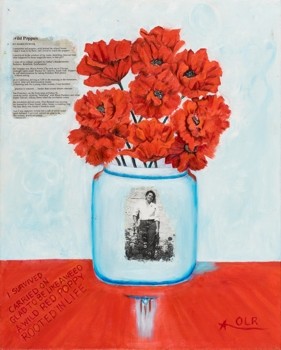
Painting by Oscar Lopez RIvera, for Calendar Certain Days:The 2017 Calendar for Freedom for Political Prisoners.
We want to remind folks that the 2017 Certain Days: Freedom for Political Prisoners calendars are now available. You can buy one via the website below:
*For orders of 1-9 copies ($12 each): see
https://www.leftwingbooks.net/book/content/certain-days-calendar-2017*For bulk orders of 10 or more copies ($8 each): see
http://www.certaindays.org/?q=welcome
One of the rebels from the 2015 uprising at Tecumseh prison in Nebraska, Roger Weikle, was recently sentenced to serve an additional 10 years for his role in the uprising and more specifically for an alleged assault on a guard. Along with Weikle, five other prisoners were charged and either have been sentenced or have upcoming trials. You may remember the submission to It’s Going Down about prisoners from the Nebraska uprising we mentioned back in May and the beautiful poster that was shared with folks who would like to be in touch with those of us on the outside. That poster is a few months old, so we recommend double checking the addresses are correct by looking at the Nebraska Department of Corrections Inmate Search.
Out in Michigan folks at Kinross Correctional facility are continuing to face repression. There is a pretty good article from the Detroit Free Press featuring an interview with a prisoner who participated in the protest at Kinross:
An inmate at Kinross Correctional Facility says hundreds of prisoners had returned to their housing units and were peaceful on Sept. 10 until more than 100 officers, armed with shotguns and firing pepper spray, stormed the units and triggered anger and acts of vandalism.
“It could have been settled,” Kinross inmate Anthony Bates, who is serving 35-70 years for assault with intent to murder, told the Free Press in a telephone interview.
“When the officers came in, they caused chaos,” said Bates, 39, imprisoned for convictions arising from a 1996 incident in Wayne County. “It sparked the flame … (and) started a wildfire.”
There is a call out for a call in campaign to the prison administration of Michigan’s Department of Corrections to end the retaliation against those who participated in the uprising:
On September 10, over 400 prisoners protested peacefully at Kinross Correctional Facility in the Upper Peninsula of Michigan, following the September 9 nationwide prison workers’ strike. While details are still emerging, we know that prisoners met with the wardens to peacefully communicate their demands. These demands included better wages, better quality and quantity of food, and no retaliation for the peaceful protest. Yet about 150 prisoners were accused of being instigators and were transferred to other facilities. In at least some cases, they were accused of “incite to riot” and placed in higher-security levels and disciplinary isolation.
Please call Michigan Department of Corrections director Heidi Washington as well as some of the facilities where prisoners formerly at Kinross may be facing punishment (see numbers and script below). Call every day this week: Monday, October 3, through Friday, October 7.
After calling, please comment on this Facebook page to let us know what happened.
Sample script:
“Hi. I’m calling about all the prisoners who were transferred from Kinross after their nonviolent demonstration on September 10. I demand that all charges against them be dropped, that all of them be removed from disciplinary segregation, that they be returned to their previous security levels and the general population, and that there be no further retaliation against them of any kind.”
Here is a detailed “how-to” video for calling prisons, if you feel nervous about phoning.
It seems like the strike is getting more mainstream news play on a national and even international level. Good news indeed. This feature over at VICE News on the prison strike with Bennu Hannibal Ra-Sun (Melvin Ray) is well done. It is definitely worth the listen and read. We also liked this story from The New Yorker that covers the strike that has some focus on Perry Correctional Facility in South Carolina.
Speaking of international levels, we want to give a gigantic nod of solidarity to the prisoners who fucked shit up when their comrade’s pet hamster died. The article states that all the prisoners had grievances, ranging from general conditions to having personal items destroyed by COs, though one in particular was simply heartbroken about his hamster friend.
The death of an inmate’s pet hamster was behind a prisoners’ protest in the UK that caused more than £12,000 (NZ$21,000) damage to their jail. The four men, each serving between five and six-and-a-half year sentences for burglary offences, “trashed” the landing, smashed furniture and light fittings, and threw missiles at prison staff.
With that in mind, let’s burn down these prisons…
– some bad kids who once had a pet hamster die too and would have burned that prison down with you


